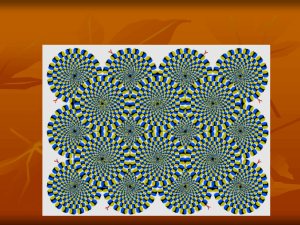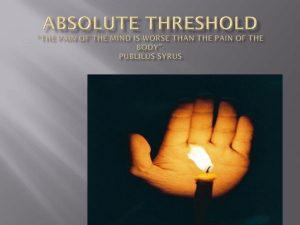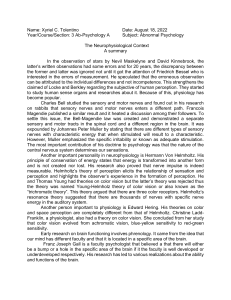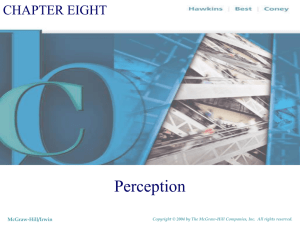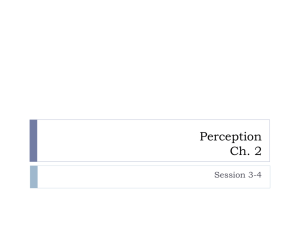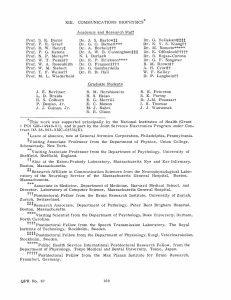Sensation & Perception
advertisement
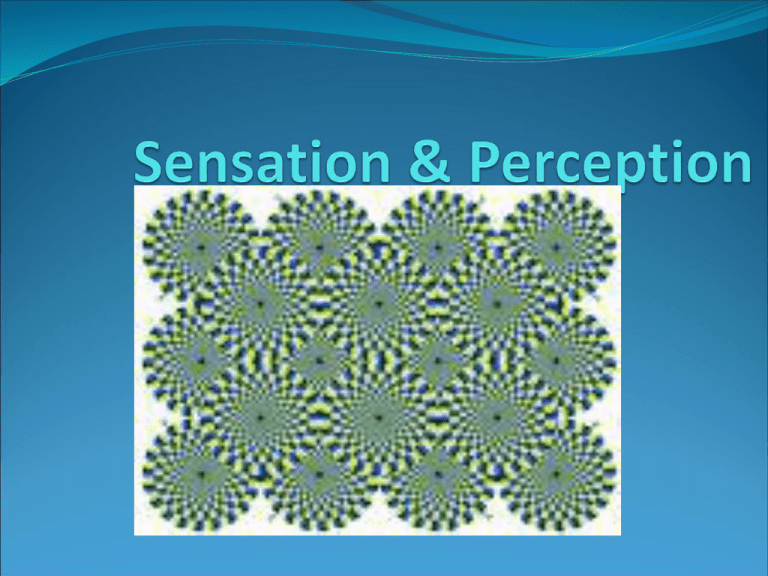
The Lion King Do you see the message hidden? Do you see the message hidden? Political Subliminal Message What impact does this message have? Will it last? Commercial Subliminal Messages Hidden messages targeted at our subconscious mind. Examples: 1. Small images inside a larger picture 2. An audio message hidden inside a recording 3. Messages in song played backward 4. Hidden words or pictures that quickly appear 5. Powerful marketing tools Effects us on a emotional level Short lived results Sensation & Perception Sensation- stimulation of the sense organs Raw data of experience: smells, sights, sounds, pain, etc. Perception- creating meaning from the raw sensory information Basic Process 1. 2. 3. 4. Sensory organs absorb energy from a physical stimulus in the environment Sensory receptor cells detect stimulus energies and convert them into neural impulses (transduction) Electrochemical message is sent to the brain Specific areas of the brain organizes the input and transforms them into something meaningful Attention Selective Attention- focusing our awareness on a particular stimuli Cocktail Party Phenomenonfilter out many sounds to maintain one conversation but will notice your name in another conversation Psychophysics- how physical stimuli are translated into psychological experience Gustav Fechner’s work on thresholds Threshold- is a dividing point between energy levels that do and do not have a detectable effect Absolute Threshold- minimum amount of stimulation that an organism can detect 50% of the time Environment can affect detection of a stimulus Examples of absolute threshold under ideal conditions Online demo: http://www.garyfisk.com/anim/threshold.swf JND- just noticeable difference is the smallest difference in the amount of stimulation that a specific sense can detect The absolute threshold is the jnd from nothing (no stimulus) JND is greater for stronger stimuli than for weaker ones As a stimulus increases in magnitude, the JND becomes larger Weber’s Law- states that the size of a jnd is a constant proportion of the size of the initial stimulus This portion is called the Weber Fraction It can apply to all the senses but different fractions apply to different types of sensory input Ex: Weber fraction for weights is 1/30, which means you should detect the difference btw a 30 ounce weight and a 31 ounce weight Envelope/Book EXPERIMENT! Fechner’s Law The magnitude of a sensory experience is proportional to the # of JNDs that the stimulus causing the experience is above the absolute threshold. Constant increments in stimulus intensity produce smaller and smaller increases in perceived magnitude of sensation. EX: Dark room with lamp and three bulbs. Three equal increases in stimulus intensity produce progressively smaller differences in the magnitude of sensation. Imagine you are monitoring a radar screen Signal Detection Theory The detection of stimuli involves decision processes as well as sensory processes, which are influenced by many factors besides stimulus intensity Radar Screen with four possible outcomes: A. Hits-Detecting signals when present B. Misses-Failing to detect signals when present C. False Alarms-detecting signals when they are absent D. Correct Rejection-Not detecting signals when they are absent Setting Criterion Depends on our expectations and on the consequences of missing a signal or of reporting a false alarm. Ex: Waiting for the pizza guy at a party. Sensory Adaptation Gradual decline in sensitivity to prolonged stimulation Ex: Garbage In reality, the stimulus intensity (the odor) stays the same but with continued exposure your sensitivity to it decreases Ex: Jumping into a swimming pool It allows people to ignore the obvious but you can notice CHANGES in sensory input A behavioral adaptation that has been sculpted by natural selection
